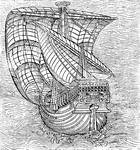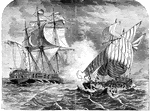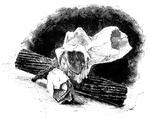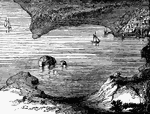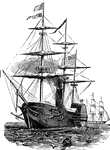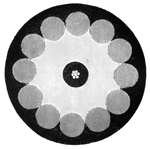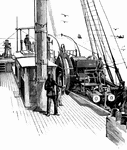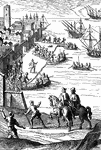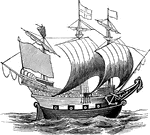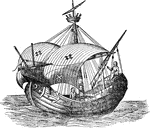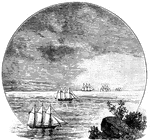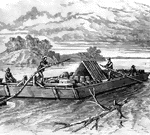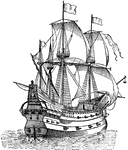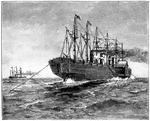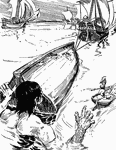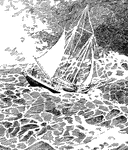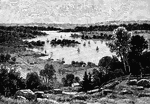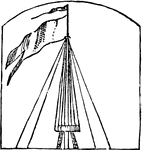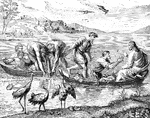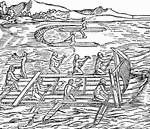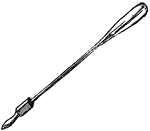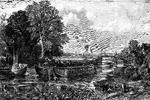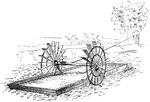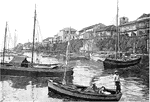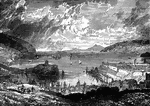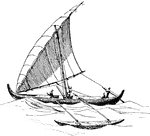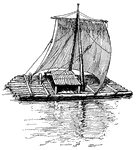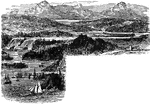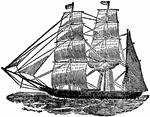
Bark
Or Barque, a three-masted vessel of which the foremast and mainmast are square-rigged, but the mizzenmast…
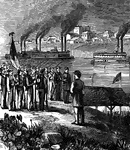
Bellaire
"Bellaire, O.- Steamboats conveying troops and munitions of war for the Federal forces on the Great…
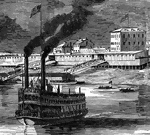
Bellaire
"Bellaire, O.- Steamboats conveying troops and munitions of war for the Federal forces on the Great…

Bellaire, Ohio
"Bellaire, O.- Steamboats conveying troops and munitions of war for the Federal forces on the Great…
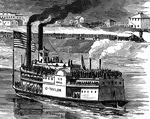
Bellaire
"Bellaire, O.- Steamboats conveying troops and munitions of war for the Federal forces on the Great…

Cardinal de Richelieu Towing Cinq-Mars and de Thou
"Cardinal de Richelieu Towing Cinq-Mars and de Thou. From the painting by Paul Delaroche." -Rees, 1894

Columbus, Kentucky
"General view of Columbus, Ky., and its fortications, looking down the river, showing the 'Iron Bluffs'…

Burning of Confederate gunboats
"Burning of the Confederate gunboats, rams, etc., at New Orleans and Algiers, on the approach of the…
Federal Fleet
"Panoramic view of the Federal fleet passing the forts of the Mississippi, on its way to New Orleans,…

Funeral Procession Crossing the Lake of the Dead
"As the mummy of the dead was placed in a barge to be taken across the Lake of the Dead-for it was the…

Gulliver in a Miniature Boat
The queen had built for Gulliver a first rate boat by the joiner for the palace. It was a miniature,…

Kearsarge Sinking the Alabama
The sinking of the Alabama by the Union Kearsarge. Some Confederates aboard the Alabama escaped to England…
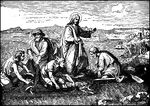
The Miraculous Catch of Fish - Jesus Fills the Disciples' Boats with Fish
"And when he had left speaking, he said unto Simon, Put out into the deep, and let down your nets for…
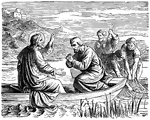
The Miraculous Draught of Fish - Jesus Fishes with His Disciples
"And when he had left speaking, he said unto Simon, Put out into the deep, and let down your nets for…

The Great Naval Battle of the Mississippi
Passage of the second division of the Federal Squadron past Fort St. Philip. On April 24, 1862 at three…
New Jersey Troops
"The New Jersey troops crossing the Chesapeake Bay, in sixteen propellers, on their way to Washington,…
Occupation of Norfolk
"Occupation of Norfolk, VA., by the Federal troops- view of the city- Federal vessels at anchor." —Leslie,…
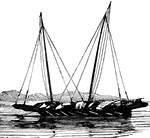
Pindjajap
A boat of Sumatra and the Malay archipelago, with from one to three masts, generally two, carrying square…
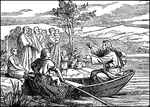
Jesus Teaches the Multitude on the Shore While He Sits in a Boat
"On that day went Jesus out of the house, and sat by the sea side. And there were gathered unto him…
